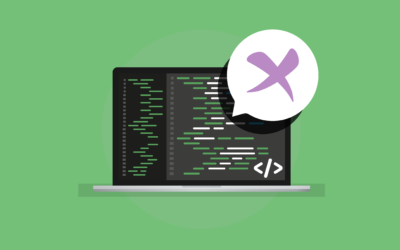Legito for Sourcing and Procurement


Jan 24 · 3 min read
 Today, we’ll look at the application of the Legito platform for folks working in sourcing and procurement. The challenge they face, among many, is buying-in goods and services from suppliers who will have their own procedures, policies, pricing and requirements, and checking that they will fit the needs of the customer. The scene is set for a potential clash when a buyer’s procurement team meets the supplier’s sales team. Meanwhile, their colleagues in both organisations want to get things moving.
Today, we’ll look at the application of the Legito platform for folks working in sourcing and procurement. The challenge they face, among many, is buying-in goods and services from suppliers who will have their own procedures, policies, pricing and requirements, and checking that they will fit the needs of the customer. The scene is set for a potential clash when a buyer’s procurement team meets the supplier’s sales team. Meanwhile, their colleagues in both organisations want to get things moving.
If you think it will work in practice, you could build a Legito solution that effectively forces all buying processes through a strict regime, audit trail, and get signatures on all the paperwork you see fit to require. However, if life were that simple, you wouldn’t need sourcing professionals. We think it’s better to create a facility that leaves space for the sourcing professionals to use their expertise and support them with the more tedious tasks, and help them keep visibility of the big picture.
First Things First
Let’s suppose you have started a Legito trial. Where would you begin? You could start by defining your documents and processes at a granular level and then replicate them in Legito. If that looks manageable without too much difficulty, do that. However, if you struggle to extract all those low-level details, it might be because you don’t have many things that are fixed and defined at low-level (perhaps because it doesn’t serve the real-world needs of the business). In those cases, we suggest you start by mapping some high-level procedures and thinking about the subsidiary documents and tasks that serve each step of the end-to-end process.

Using Legito to implement and manage a high-level workflow is one way to create the space for human intervention. You don’t need to automate everything – you add optimum value by focussing only on the bits that are tedious and repetitive. If you take this approach, you build a working application more quickly, and add extra layers later as the need arises.
Expertise of your Sourcing Team
For sourcing teams that manage higher volumes of lower complexity purchases, consider using Legito to enable some self-service options for business colleagues – this can work particularly well when a procurement process starts with information-gathering. You could use Legito to prompt colleagues through the first few steps, so the sourcing team has what they need when it’s time for them to start work. This will reduce wait times and alleviate frustrations associated with stop-start patterns because it has to pause for things that are missing.
For sourcing teams faced with a wide variety of purchases, where it can be hard to keep track of the different requirements associated with different categories of purchasing, Legito can work well as a reference source, helping you retrieve the correct documents and requirements.
If you start by modelling only high-level procedures, it takes less time to build. Because Legito is a no-code platform for citizen developers, you can use the expertise of your sourcing team to build what you need without having to remove them totally from their duties.
Legito Deployment
If you deploy Legito to augment the purchase process, it’s a small step to retain the associated data to help you manage suppliers’ fulfilment of contracts. Use the automatic extraction of diary dates, so you don’t overlook renewal dates, SLA checks, routine inspection of insurance policies, and other supplier assurance requirements.
Legito for Sourcing and Procurement


Jan 24 · 3 min read
Today, we’ll look at the application of the Legito platform for folks working in sourcing and procurement. The challenge they face, among many, is buying-in goods and services from suppliers who will have their own procedures, policies, pricing and requirements, and checking that they will fit the needs of the customer. The scene is set for a potential clash when a buyer’s procurement team meets the supplier’s sales team. Meanwhile, their colleagues in both organisations want to get things moving.
If you think it will work in practice, you could build a Legito solution that effectively forces all buying processes through a strict regime, audit trail, and get signatures on all the paperwork you see fit to require. However, if life were that simple, you wouldn’t need sourcing professionals. We think it’s better to create a facility that leaves space for the sourcing professionals to use their expertise and support them with the more tedious tasks, and help them keep visibility of the big picture.

First Things First
Let’s suppose you have started a Legito trial. Where would you begin? You could start by defining your documents and processes at a granular level and then replicate them in Legito. If that looks manageable without too much difficulty, do that. However, if you struggle to extract all those low-level details, it might be because you don’t have many things that are fixed and defined at low-level (perhaps because it doesn’t serve the real-world needs of the business). In those cases, we suggest you start by mapping some high-level procedures and thinking about the subsidiary documents and tasks that serve each step of the end-to-end process.
Using Legito to implement and manage a high-level workflow is one way to create the space for human intervention. You don’t need to automate everything – you add optimum value by focussing only on the bits that are tedious and repetitive. If you take this approach, you build a working application more quickly, and add extra layers later as the need arises.

Expertise of your Sourcing Team
For sourcing teams that manage higher volumes of lower complexity purchases, consider using Legito to enable some self-service options for business colleagues – this can work particularly well when a procurement process starts with information-gathering. You could use Legito to prompt colleagues through the first few steps, so the sourcing team has what they need when it’s time for them to start work. This will reduce wait times and alleviate frustrations associated with stop-start patterns because it has to pause for things that are missing.
For sourcing teams faced with a wide variety of purchases, where it can be hard to keep track of the different requirements associated with different categories of purchasing, Legito can work well as a reference source, helping you retrieve the correct documents and requirements.
If you start by modelling only high-level procedures, it takes less time to build. Because Legito is a no-code platform for citizen developers, you can use the expertise of your sourcing team to build what you need without having to remove them totally from their duties.
Legito Deployment
If you deploy Legito to augment the purchase process, it’s a small step to retain the associated data to help you manage suppliers’ fulfilment of contracts. Use the automatic extraction of diary dates, so you don’t overlook renewal dates, SLA checks, routine inspection of insurance policies, and other supplier assurance requirements.
More Weekly Articles



















